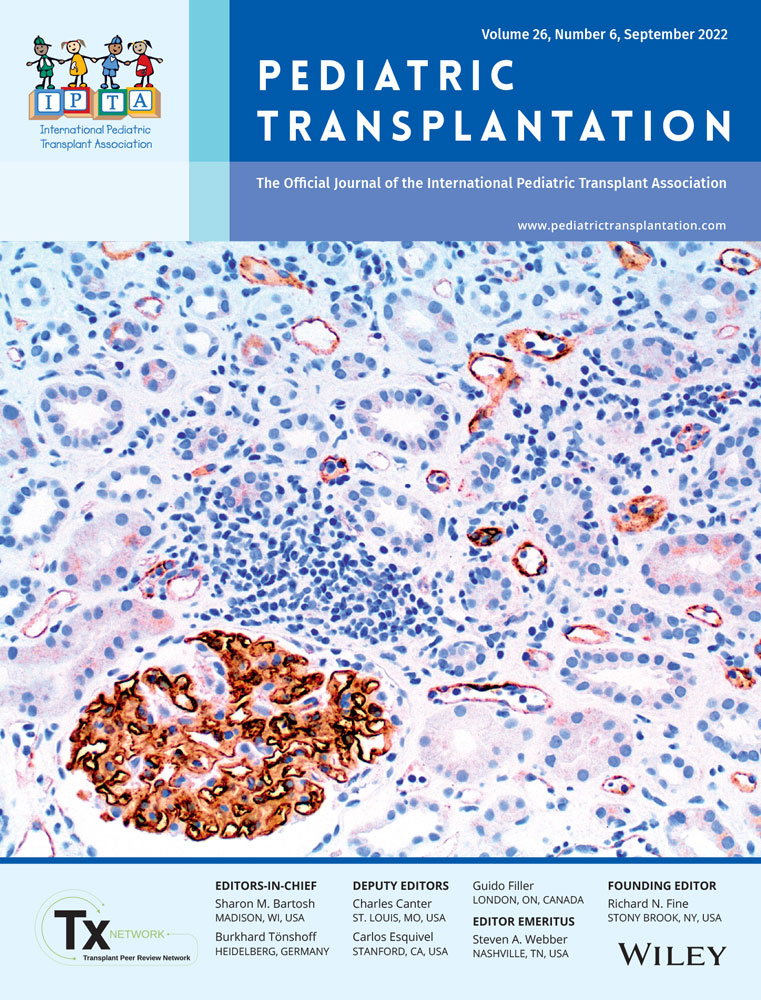Our evolution in the treatment of hepatic artery and portal vein thrombosis in pediatric liver transplantation: Success with catheter-directed therapies
Nicolas F. Moreno, Jose Alberto Hernandez contributed equally to the production of this manuscript and share first-authorship.
Funding information
None.
Abstract
Background
In pediatric liver transplant recipients, hepatic artery thrombosis and portal vein thrombosis are major causes of acute graft failure and mortality within 30 days of transplantation. There is, however, a strong possibility of graft salvage if flow can be re-established to reduce ischemic injury. The current standard treatment is surgical revascularization, and if unsuccessful, retransplantation. Due to our success in treating these complications with catheter-directed therapies, we sought to summarize and publish the outcomes of all patients who experienced hepatic artery thrombosis or portal vein thrombosis within 30 days of liver transplantation.
Methods
We conducted a retrospective cohort analysis of 27 pediatric liver transplant recipients who experienced hepatic artery thrombosis (n = 13), portal vein thrombosis (n = 9), or both (n = 5) between September 2012 and March 2021. We collected and tabulated data on the patients and therapies performed to treat them, including success rates, primary and secondary patency, and clinical outcomes.
Results
Among these patients, 6 were managed with anticoagulation and relisting for transplant and 21 had a primary revascularization attempt. Surgical recanalization was attempted in 7 patients of which 3 had successful recanalization (43%) and catheter-directed recanalization was attempted in 14 patients with 100% success in re-establishing blood flow to the graft. Additionally, patency was increased, and mortality was decreased in patients treated with catheter-directed recanalization compared to surgical revascularization or anticoagulation alone.
Conclusion
This data illustrates the need to further investigate catheter-directed thrombolysis as a potential first-line treatment for postoperative HAT and PVT in pediatric liver transplant recipients.
CONFLICTS OF INTEREST
The authors of this manuscript have no conflicts of interest to disclose as described by Pediatric Transplantation.
Open Research
DATA AVAILABILITY STATEMENT
The data that support the findings of this study are available from the corresponding author upon reasonable request.




